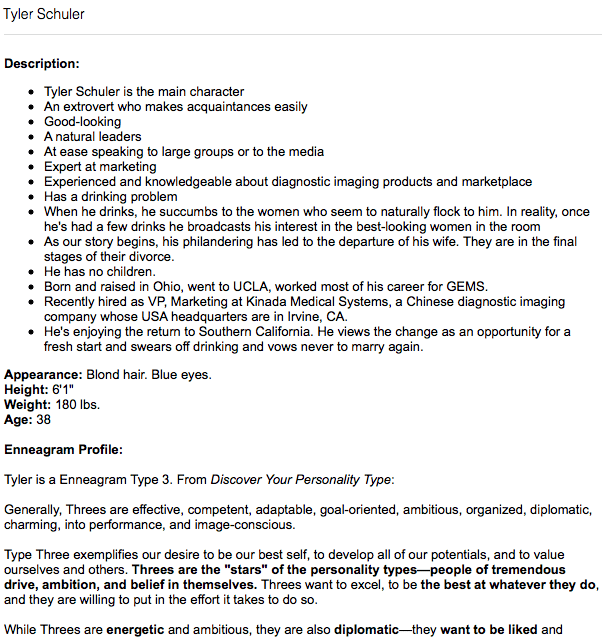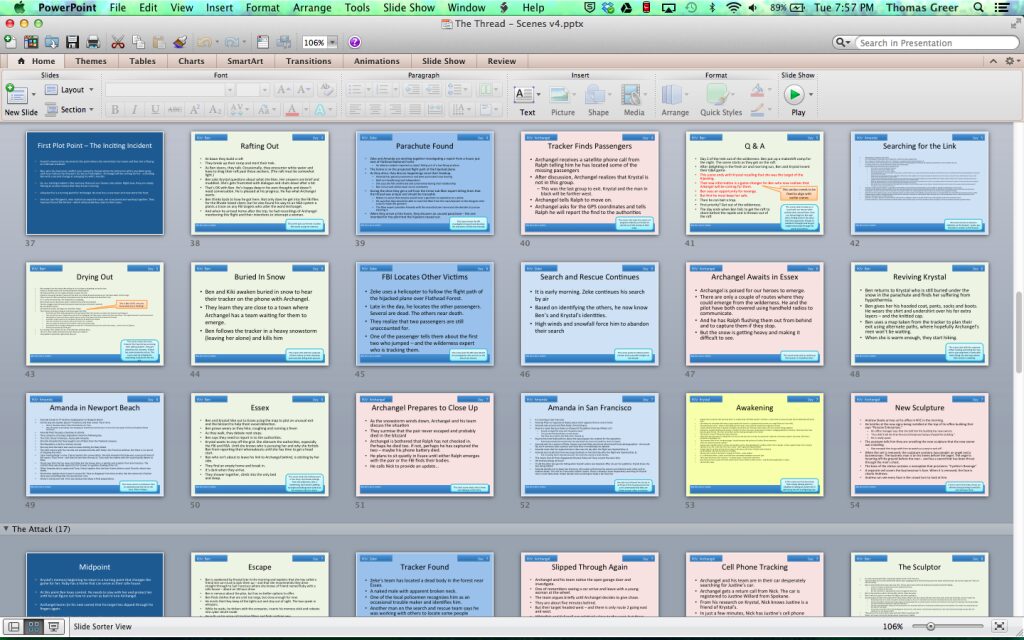I write complex stories with action taking place in multiple fronts that needs to be synchronized. Changing the time, place, or other details in one scene often requires modifications to be made elsewhere.
In my still unfinished first novel, The Thread, I have struggled to get the story right. I abandoned my third re-write after completing about two-thirds of the story when I realized my revisions had boxed me into a predictable ending that lacked the required level of suspense. In addition, the word count looked like it would exceed my target by at least fifty percent.
Before starting my fourth version of the novel, I decided to use tools that served me well on my second novel, Dead Weight, which I wrote as a NaNoWriMo (National Novel Writing Month) project over two consecutive Novembers (about 50,000 words each time). To write at a NaNoWriMo pace (1667 words per day), I needed a plan. Here is what worked for Power Up.
Concept
My planning for Dead Weight started with a concept. This would be a writing exercise to create a despicable character and then tell a compelling story that the reader roots for him. I conjured up a philandering, alcoholic corporate vice-president who gets fired from his job after getting caught having sex with a female salesperson in the company’s hospitality suite during their National Sales Kickoff conference. I decided to write the story in first person since I had never done that before.
I spent a long time thinking about getting readers to embrace him. I decided to paint him as striving to cast off his demons but failing and then, after hitting rock bottom, picking himself up and committing to changing himself, only to fail anew, finding a deeper bottom again and again. The story would end when he finally sets and achieves a goal, which needs to be something unexpected and something that demonstrates he’s finally changed.
Brainstorming
Using this concept, I brainstormed things my character might try and spectacular ways to fail. For example, he might get a new job only to get falsely accused of sexual harassment. He could join AA, fall off the wagon, after a couple of drinks, get a call from a friend in desperate need of help, only to get arrested and jailed for driving under the influence. I filled a whiteboard wall with ideas like these.
High Level Plot Summary
From these ideas, once I developed the basic construct of the story, I sketched out the plot at a high level: how the story would open, the inciting incident that would put him on a quest, his unsuccessful attempts to change himself and then, realizing it’s not all about him, what he does to demonstrate he has genuinely changed.
Character Profiles
By now, I had a solid idea of characters who played major roles in the story. At this point I gave them names and wrote a page or two for each, detailing their physical traits, their motivations and their back stories.
Don’t rush past this step. Take time to develop realistic and engaging characters. Perhaps my inside-out character development model will help you.
Scene on Slides in Bullet Points
I had all of this done by mid-October. NaNoWriMo didn’t begin for a couple of weeks. So I decided to sketch out each scene. I started with Post-It Notes but got frustrated; they kept falling off my whiteboard wall and it took too much work to rearrange them. I could have used a word processor or a spreadsheet, but I chose business presentation software (PowerPoint) because it let me easily resort the scenes (one per slide) and it encouraged me to use bullet points to describe each scene.
And Finally, Writing
If I hadn’t needed to kill time during the two weeks before November 1, I would never have taken the time to sketch out each scene. However, the time invested in this activity paid off handsomely. Each day, when I found time to write, I didn’t waste time deciding what to write. I didn’t waste time writing scenes that I’d later discard. I spent my time productively.
Does that mean I blindly executed each scene as described? Not on your life. I thought of better ideas along the way. (See my article describing the steps I take before writing scenes: Visualize Scene Like a Master.) My characters did things I hadn’t anticipated. I inserted new scenes. I deleted other scenes. However, I stuck to the high-level plan. The major turning points of the story stayed in place.
The completed story needed only tightening up before it went out for line edit. Unlike my first novel, which required major surgery (several times) before I got the story to flow properly.
A Plot Planning Solution for the Masses?
Personally, I constantly search for new writing tips and techniques. I attend conferences and workshops. I talk to other writers. When I find something that appeals to me, I try it out. If it works, I keep it.
I’m sharing what works for me in the hopes that it benefits you.
One final note, I used PowerPoint because I already owned a copy. There are plenty of other programs that offer similar features. If you want to test this concept and don’t own PowerPoint, use Google Slides or download LibreOffice and use Impress. (LibreOffice is free and runs on Windows, Mac OS X, and even Linux.)
This is what works for me. Please take time to share what works for you in the comments below.
Comments
Related Posts

How to Overcome Writer’s Block – A Compendium of Solutions
I’ve compiled the best tips on overcoming writer’s block from all around the web. If your stuck, here are some great ideas to help you break through.

The Right Skin Type To Be A Successful Writer
Successful authors share the same skin type. Do you have what it takes?

Book Trailers: Are They Effective?
Do book trailers actually affect book buying decisions? Help me decide by completing my poll and adding your comments.

Creative Ways To Capture Research Notes
When my research for my novel-in-progress required hiking in freezing weather, taking notes the traditional way didn’t work well. Here’s a couple of ideas of how to use technology for even better results.






0 Comments
Trackbacks/Pingbacks